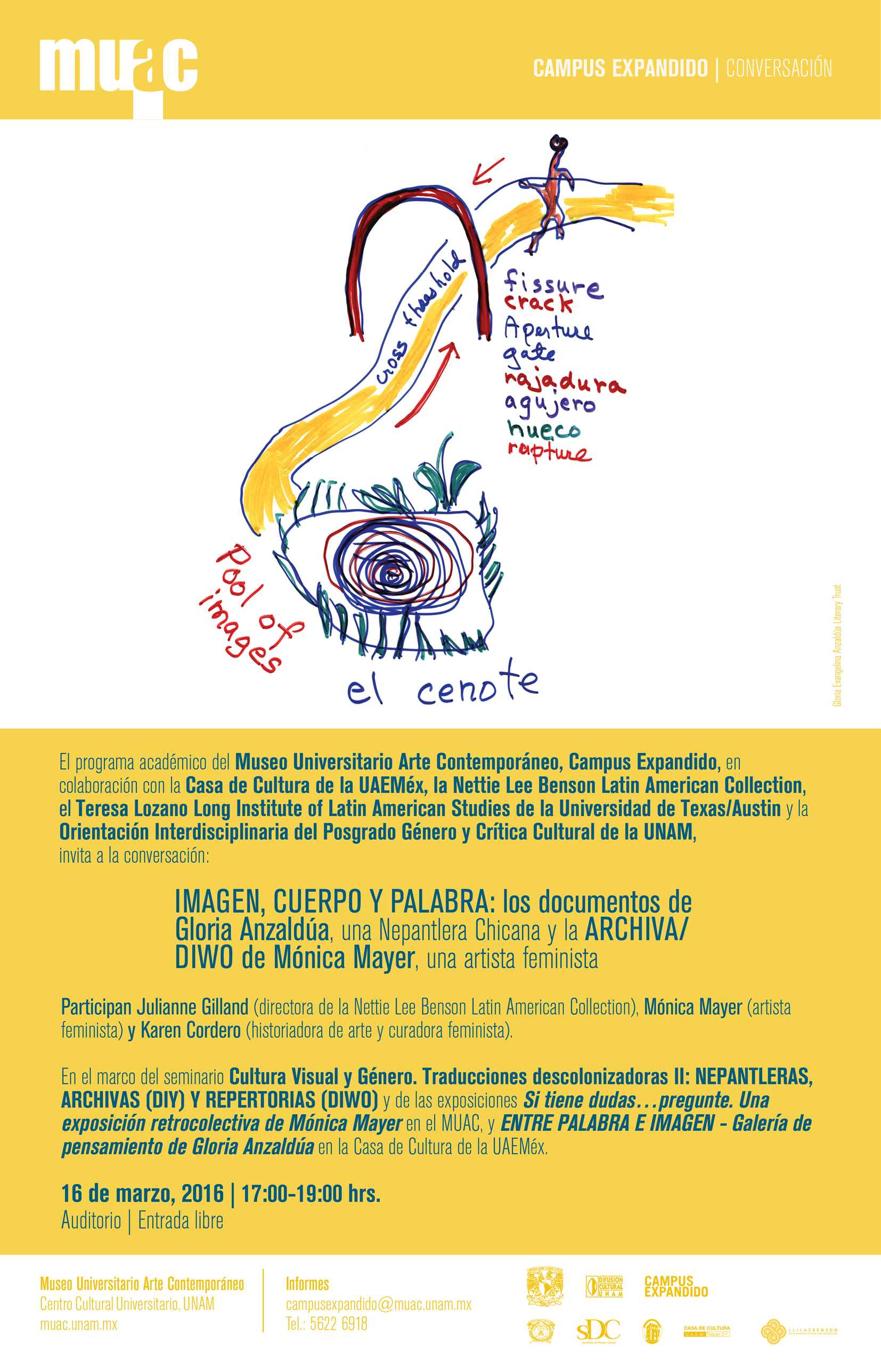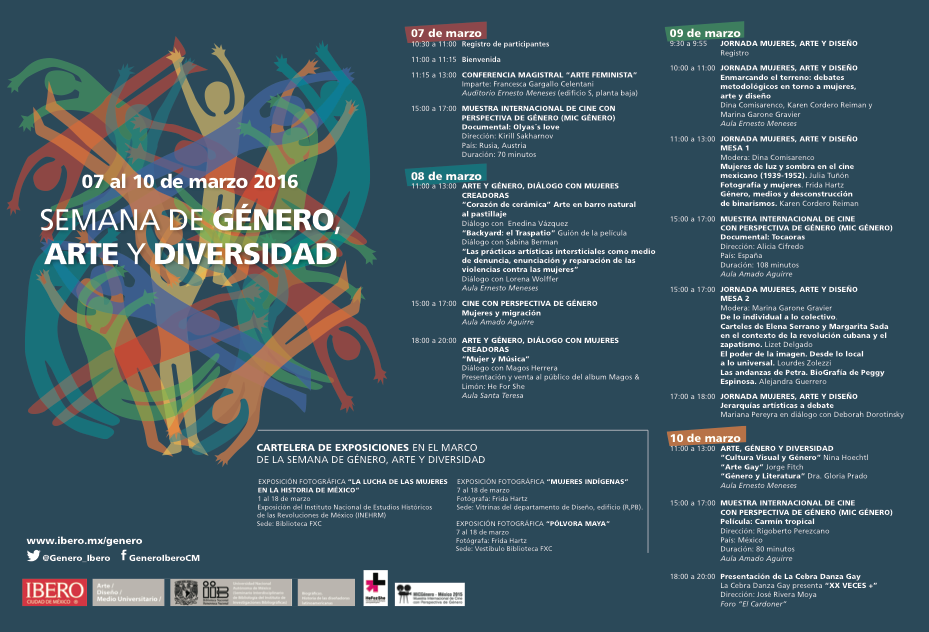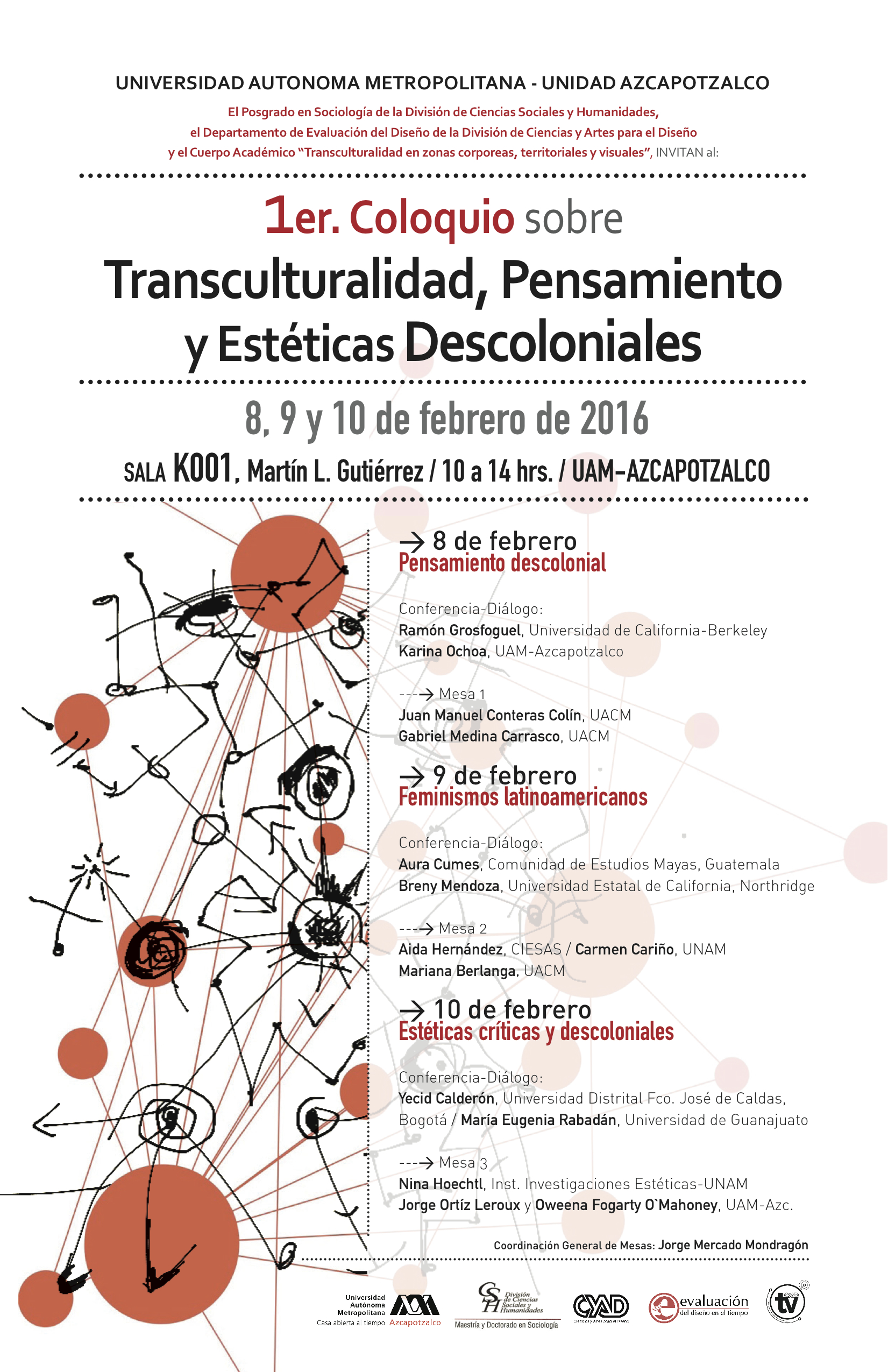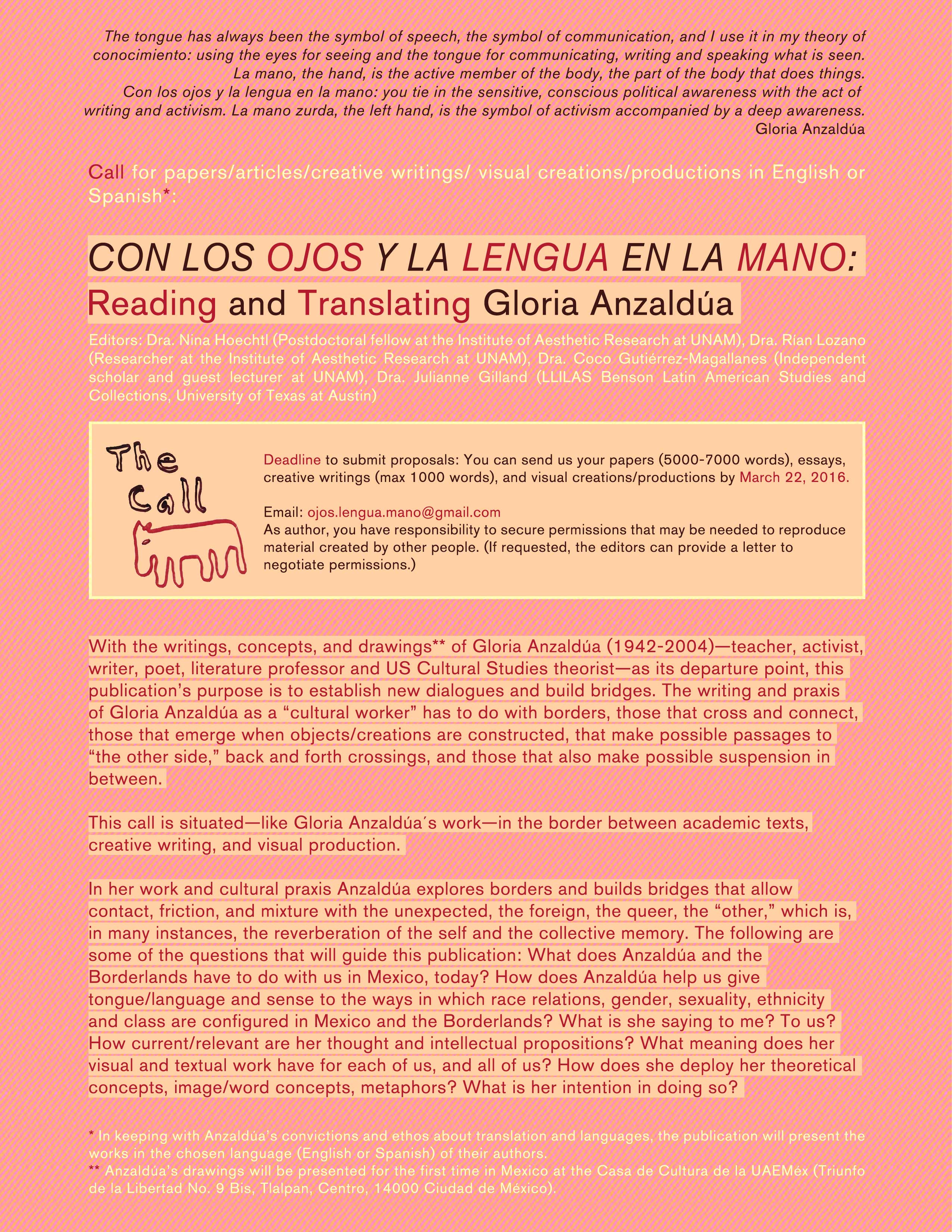Blog
Gastvortrag „Gegengemeinsam in lucha libre (Wrestling in Mexiko)“ @ Kunstuni Linz
Gastvortrag „Gegengemeinsam in lucha libre (Wrestling in Mexiko)“
im Rahmen vom Jahresthema „appropriation – body & soul“
Mittwoch, 05.04.2017, 14 Uhr
Kunstuniversität Linz
Domgasse 1
Zeitbasiertes Wohnzimmer DO0458
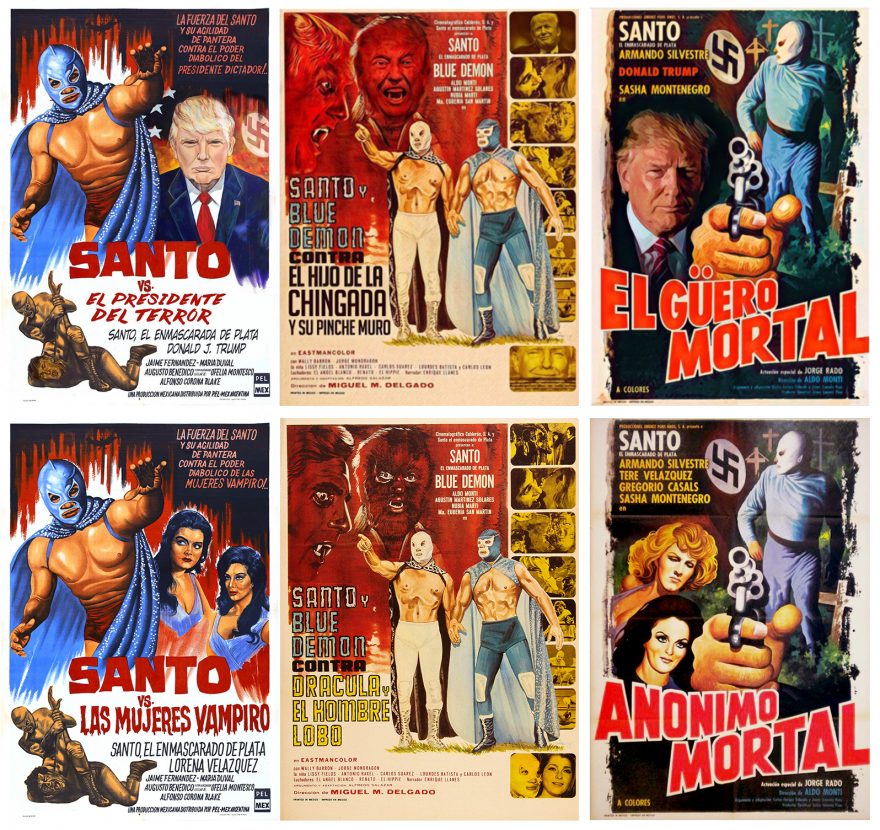
Präsentation und Ausstellung @ BEYOND BORDERS
Präsentation und Ausstellug A(R)MANDO VO(I)CES Eine Gedankengalerie von Gloria Anzaldúa mit Verena Melgarejo Weinandt im Rahmen der internationalen Konferenz BEYOND BORDERS: Literaturas y culturas transfronterizas mexicanas y chicanas
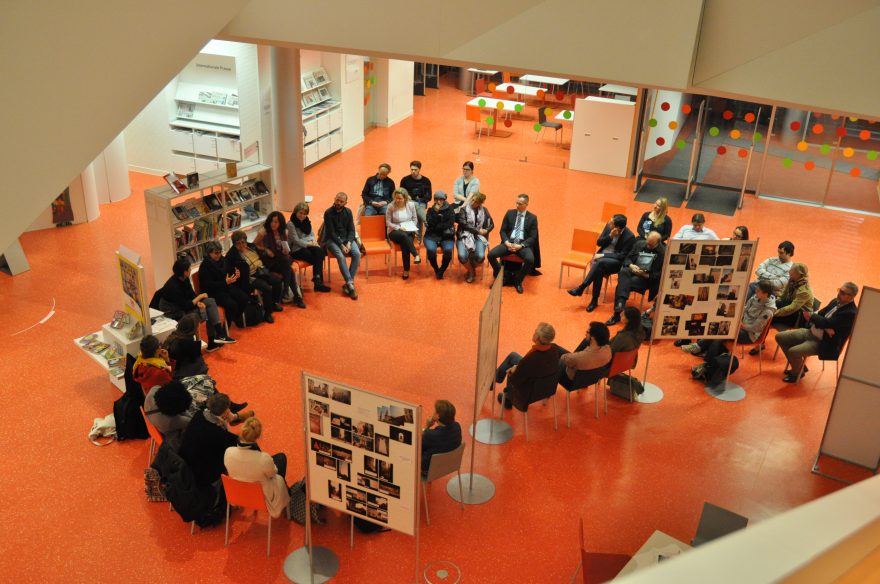
Videopräsentation „MY GÜERX SKIN HURTS HORRIBLY. -Sí, cómo no.“, SGFA 2016
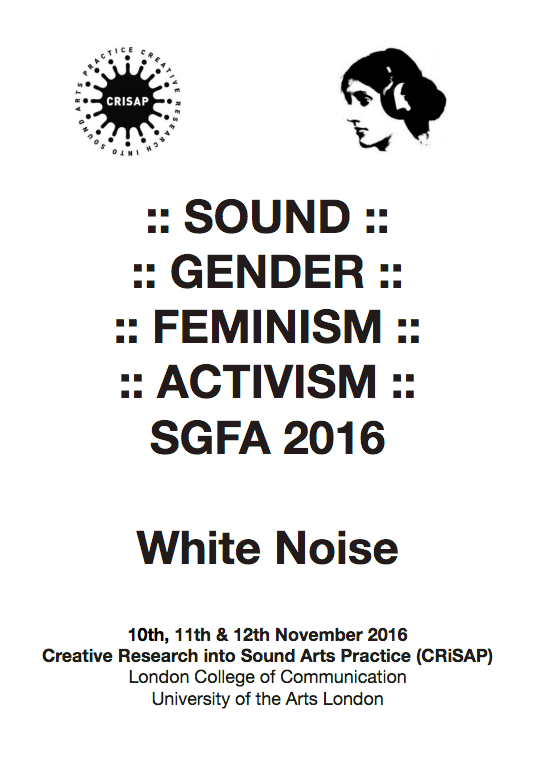
Am 11. November 2016 nahm INVASORIX mit der Videopräsentation MY GÜERX SKIN HURTS HORRIBLY. -Sí, cómo no. an SOUND GENDER FEMINISM ACTIVISM SGFA 2016 White Noise, University of the Arts London, teil
As cuir-feminists in a white supremacist capitalist patriarchy – as our imaginary friend bell hooks so accurately termed it – we attempt to intervene in its white noise in order to interrupt its hissing seemingly tranquilizing yet numbing sound. Moreover, in the mexicano context at least half of our group are read and addressed as güerxs: the word may refer to personas with blond hair and/or fair skin and/or to their supposedly “higher” social and cultural status, thus it might be also used to güeriar/flatter in order to get something.
While associating white noise with an opaque and subaudible power, which hierarchically organizes bodies, lands, resources and access, among others, through a reggaetón song we seek to address these complex intersections as well as the power dynamics, blind spots, and different privilegios such as racial, class and educational aspects within our group: How do they affect, transform, challenge, hinder and lessen relationships, dialogues, work and the ethical, political and creative risks we take? How could our reggaetón song be a fertile ground to provocar cuir-feminist empowerment and a significant descolonial gesture challenging its essentializing association of „latinx“ y „caribeñx“ as well as its intrinsic relation with dancing, physicality and sexualidad?
Essay „Wrestling With Burlesque, Burlesquing Lucha Libre,“ in Performance and Professional Wrestlig
Mein Essay „Wrestling With Burlesque, Burlesquing Lucha Libre“ (in Englisch) ist Teil von Performance and Professional Wrestling, editiert von Broderick Chow, Eero Laine, Claire Warden mit Beiträgen von Keiko Aiba, Stephen di Benedetto, Janina Bradbury, Broderick Chow, Morgan Daniels, Carrie Dunn, Jon Ezell, Stephen Greer, Jamie Lewis Hadley, Nina Hoechtl, Charles Hughes, Eero Laine, Heather Levi, Laura Katz Rizzo, Sharon Mazer, Nicholas Porter, Claire Warden, Nicholas Ware (London and New York: Routledge, 2017)
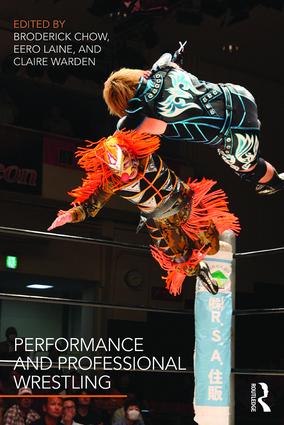
Performance and Professional Wrestling is the first edited volume to consider professional wrestling explicitly from the vantage point of theatre and performance studies. Moving beyond simply noting its performative qualities or reading it via other performance genres, this collection of essays offers a complete critical reassessment of the popular sport.
Topics such as the suspension of disbelief, simulation, silence and speech, physical culture, and the performance of pain within the squared circle are explored in relation to professional wrestling, with work by both scholars and practitioners grouped into seven short sections:
Audience
Circulation
Lucha
Gender
Queerness
Bodies
Race
A significant re-reading of wrestling as a performing art, Performance and Professional Wrestling makes essential reading for scholars and students intrigued by this uniquely theatrical sport.
SPUKEN IM ARCHIV!, 5., 6., 8. und 12. Juli 2016
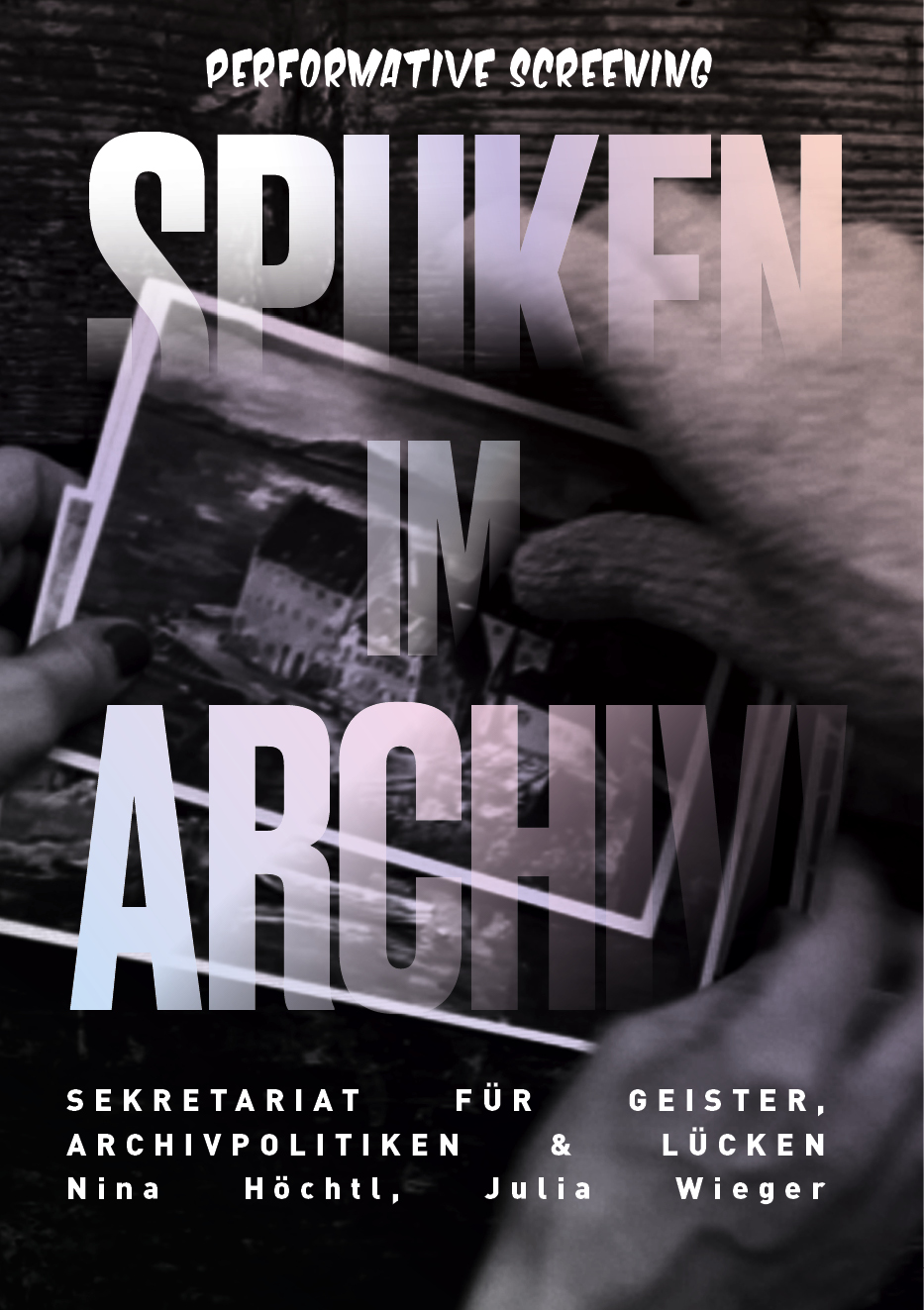
Im Juli 2016 stellt das Sekretariat für Geister, Archivpolitiken und Lücken (SKGAL) mit einer Reihe von performativen Screenings das Projekt SPUKEN IM ARCHIV! vor:
Ort I: Künstlerhaus Büchsenhausen
Weiherburggasse 13/12
6020 Innsbruck
Dienstag, 5. Juli 2016, 19.00 Uhr
Ort II: FÜNFZIGZWANZIG
Residenzplatz 10
5020 Salzburg
Mittwoch, 6. Juli 2016, 18.30 Uhr
Ort III: [esc] medien kunst labor
Bürgergasse 5
8010 Graz
Freitag, 8. Juli 2016, 21.00 Uhr
Ort IV: das weisse haus
Hegelgasse 14
1010 Wien
Dienstag, 12. Juli 2016, 19.00 Uhr
SPUKEN IM ARCHIV! ist ein Film- und Rechercheprojekt des SKGAL, das sich kritisch mit der*n Geschichte*n und dem Archiv der Vereinigung Bildender Künstlerinnen Österreichs (VBKÖ) auseinandersetzt.
SKGAL ist eine Arbeitsgruppe der VBKÖ, eine Institution, die 1910 gegründet wurde und eine der ersten Organisationen in Europa war, die die Interessen von Künstlerinnen vertrat. Während die feministischen Anfänge der Vereinigung, auch aus zeitgenössischer Perspektive, eine beeindruckende und wichtige Referenz darstellen, ist/sind die Geschichte*n der Vereinigung ambivalent: 1938 hatte sie sich dazu entschlossen mit dem Nationalsozialistischen Regime zusammenzuarbeiten, und nach 1945 gab es über mehrere Jahrzehnte keinen offensichtlichen Bruch mit den alltäglichen Routinen und personellen Besetzungen der Vereinigung während der Zeit des Nationalsozialismus. Die inhaltliche Ausrichtung der Vereinigung änderte sich erst spürbar Ende der 1990er Jahre, als es im Vorstand der VBKÖ zu einem klaren Generationenwechsel kam. Mit der veränderten Ausrichtung einher wurde 2004 das Archiv der Vereinigung gegründet und die Vereinigung begann sich im zeitgenössische feministischen Kunstkontext in Wien zu involvieren.
In diesem Zusammenhang stellt SKGAL die Frage, wie in einer selbstorganisierten Künstlerinnenvereinigung Geschichte*n geschrieben werden kann/können? Wie kann eine Vereinigung, die heute zeitgenössische feministische künstlerische Agenden pflegt, eine lebendige Verbindung zwischen historischen Auseinandersetzung und heutigen queeren und feministischen Kunstproduktionen herstellen? Und wie kann sie das mit künstlerischen Mitteln tun?
Mit den performativen Screenings SPUKEN IM ARCHIV! lädt SKGAL dazu ein, den Geistern der VBKÖ zu folgen, und mit ihnen gemeinsam das Material im Archiv der Vereinigung neu zu betrachten, und es Diskussionen und Interpretationen auszusetzen. Für dieses Projekt eignet sich SKGAL historisches Bild- und Textmaterial aus dem Archiv an, weist auf Lücken hin, ordnet Material um, und stellt ein Vielzahl von Verbindungen her. Es spuken Geister durch Orte, Stimmen und Bilder und zeigen Strategien und die Macht der Geschichte*n auf. Gemeinsam mit den Geistern widerspricht SKGAL eindeutigen Festschreibungen der Geschichte und versuchen stattdessen die Geschichte*n im Archiv zu aktualisieren, die Blicke auf seine Materialien zu verschieben. So wird es möglich, dass die Archivarin Sabine Harik, die das Archiv der VBKÖ zusammengestellt hat, die Philosophen Jacques Derrida und Michel Foucault, das feministische Künstlerinnennetzwerk INTAKT, die Kunsthistorikerin Julie M. Johnson, die Kulturwissenschaftlerin Kate Eichhorn und die Künstlerin VALIE EXPORT zusammenkommen, um die* Geschichte*n einer alten Künstlerinnenvereinigung herauszufordern!
Gefördert aus den Mitteln von SHIFT.
Ausstellung: BETWEEN WORD AND IMAGE A Gloria Anzaldúa Thought Gallery, March 17-April 16, Casa de Cultura/UAEM, Tlalpan, Mexico City
BETWEEN WORD AND IMAGE
A Gloria Anzaldúa Thought Gallery
Opening: March 17, 2016, 5:30pm
Exhibition: March, 18 – April 16, 2016
Casa de Cultura U.A.E.M. en Tlalpan
Triunfo de la Libertad #9, Mexico City
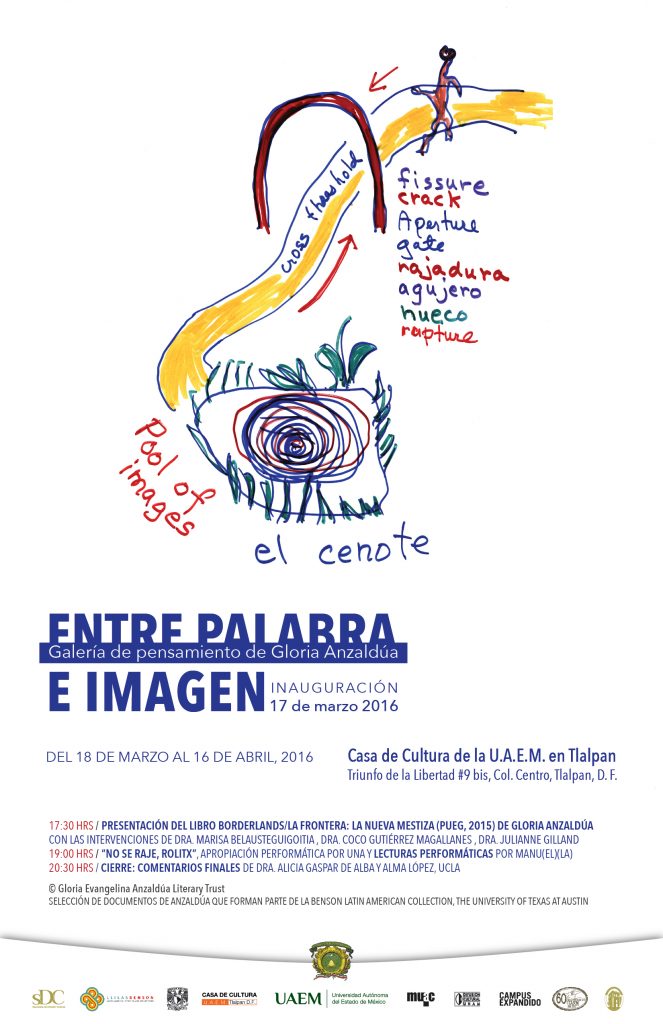
Opening program
5:30pm
Book lunch
Borderlands/La frontera: la nueva mestiza (PUEG, 2015)
by Gloria Anzaldúa
with interventions by
Marisa Belausteguigoitia (Facultad de Filosofía y Letras, UNAM)
Coco Gutierrez-Magallanes (independent researcher)
Julianne Gilland (LLILAS Benson Latin American Studies and Collections, Universidad de Texas/Austin)
7pm
“No se raje, rolitx”, performative appropriation by Una
Performative readings by MANU(EL)(LA)
8:30pm
Closing: comments by Alicia Gaspar de Alba and artist Alma López (UCLA)
A day before the opening, on March 16 at 5pm the conversation
Imagen, cuerpo y palabra: los documentos de Gloria Anzaldúa y La Archiva/DIWO de Mónica Mayer
with Julianne Gilliand (director of the Nettie Lee Benson Latin American Collection) Mónica Mayer (feminist artist) and Karen Cordero (feminist art historian and curator)
will take place at the MUAC.
An image is a bridge between evoked emotion and conscious knowledge; words are the cables that hold up the bridge. Images are more direct, more immediate than words, and closer to the unconscious. Picture language precedes thinking in words; the metaphorical mind precedes analytical consciousness.
Gloria Anzaldúa, Borderlands: the new mestiza = La frontera, 1987
When I studied painting and writing, I discovered that I could create concrete universes. Rather, I didn’t create them; I was the conductor for them, the channel.
Gloria Anzaldúa, “Creativity and Switching Modes of Consciousness,” 1986
BETWEEN WORD AND IMAGE. A Gloria Anzaldúa Thought Gallery, exhibited for the first time in the south of the Río Bravo, confronts us inevitably and creatively with the following questions: How do we read and take up the visual and textual work of Anzaldúa today, here in Mexico? What role do borders play? Borders, we inhabit, we survive and where we live. How does Anzaldúa help us give tongue/language and sense to the ways in which race relations, gender, sexuality, ethnicity and class are configured in Mexico and the Borderlands? What is she saying/showing to us? How current/relevant are her thought and intellectual propositions?
A self-described “Chicana, tejana, working-class, dyke-feminist poet, writer-theorist,” Gloria Anzaldúa also saw herself as a nepantlera, one who navigates a liminal space between worlds, identities, and ways of knowing. Just as fluid movement between English, Spanish and Nahuatl was central to Anzaldúa’s teaching and writing, so too was the interplay between words and images an essential element of her self-expression.
The words and images presented for the first time in Mexico come from transparency drawings, notes, and diagrams that Anzaldúa presented to her audiences at workshops and lecture “gigs” across the United States of America. Some are undated, but many were created during one of the most active periods of her teaching career, in the mid-1990s.
These vivid documents provide an intimate view into Anzaldúa’s creative process and demonstrate the centrality of imagination and visuality to the author’s theories of knowledge and consciousness. Anzaldúa explores borders and builds bridges that allow contact, friction, and mixture with the unexpected, the foreign, the queer, the “other,” which is, in many instances, the reverberation of the self and the collective memory.
SELECTION FROM THE ANZALDÚA PAPERS AT THE BENSON LATIN AMERICAN COLLECTION
THE UNIVERSITY OF TEXAS AT AUSTIN
CURATORS:
Julianne Gilland, Coco Gutiérrez-Magallanes, Nina Hoechtl, Rían Lozano
Curatorial assistents: Alana Varner y Frank Rodriguez (at the LLILAS Benson Latin American Studies and Collections – University of Texas/Austin), MANU(EL)(LA) (in the Casa de Cultura de la UAEMéx)
Translations: Coco Gutiérrez-Magallanes, Nina Hoechtl, Valerie Leibold, Rían Lozano, Mauricio Patrón.
Voices: MANU(EL)(LA)
Convened by Casa de Cultura de la UAEMéx, Campus Expandido/MUAC, LLILAS Benson Latin American Studies and Collections, Universidad de Texas/Austin, Tepetongo. Balneario Crítico y Centro Cultural Border.
Ausstellung: UNHEIMLICHE MATERIALIEN, 10. März – 16. Mai 2016, xhibit
UNHEIMLICHE MATERIALIEN. GRÜNDUNGSMOMENTE DER KUNSTERZIEHUNG
Eröffnung | 10.03.2016, 19.00 h
Ausstellungsdauer | 11.03.2016 – 16.05.2016
Ort | Akademie der bildenden Künste Wien, Hauptgebäude, Schillerplatz 3, 1010 Wien, xhibit
Ein kuratorisches Ausstellungs-, Recherche- und Vermittlungsprojekt
Öffnungszeiten: Di–So, 10.00–18.00 h, Eintritt frei
Sonderöffnungszeiten: geöffnet am 28.03.2016 (Ostermontag), 01.+05.05.2016 sowie am 16.05.2016 (Pfingstmontag) / 10.00–18.00 h
Kuratorinnen: Elke Krasny und Barbara Mahlknecht
Ausstellungsgrafik: Alexander Ach Schuh
Mit Beiträgen von:
Tal Adler/Friedemann Derschmidt/Elisabeth Samsonow/Karin Schneider/Anna Szöke/Niko Wahl, Anna Artaker, Eva Blimlinger, Ramesch Daha, Zsuzsi Flohr/Benjy Fox-Rosen/Eduard Freudmann/Eva Reinold/Luisa Ziaja, Lena Rosa Händle, Minna L. Henriksson, Belinda Kazeem-Kaminski, Gila Kolb, Martin Krenn, Ina Markova/Rosemarie Burgstaller/Sophie Bitter-Smirnov, Verena Pawlowsky, Sabine Plakolm, Birgit Peter, Dirk Rupnow, Hansel Sato, Sekretariat für Geister, Archivpolitiken und Lücken (Nina Höchtl und Julia Wieger), Anna Schürch, Bernadette Settele, Nora Sternfeld, Suely Rolnik (angefragt), Wer hat Angst vor dem Museum (Imayna Caceres/Pêdra Costa/Verena Melgarejo Weinandt)
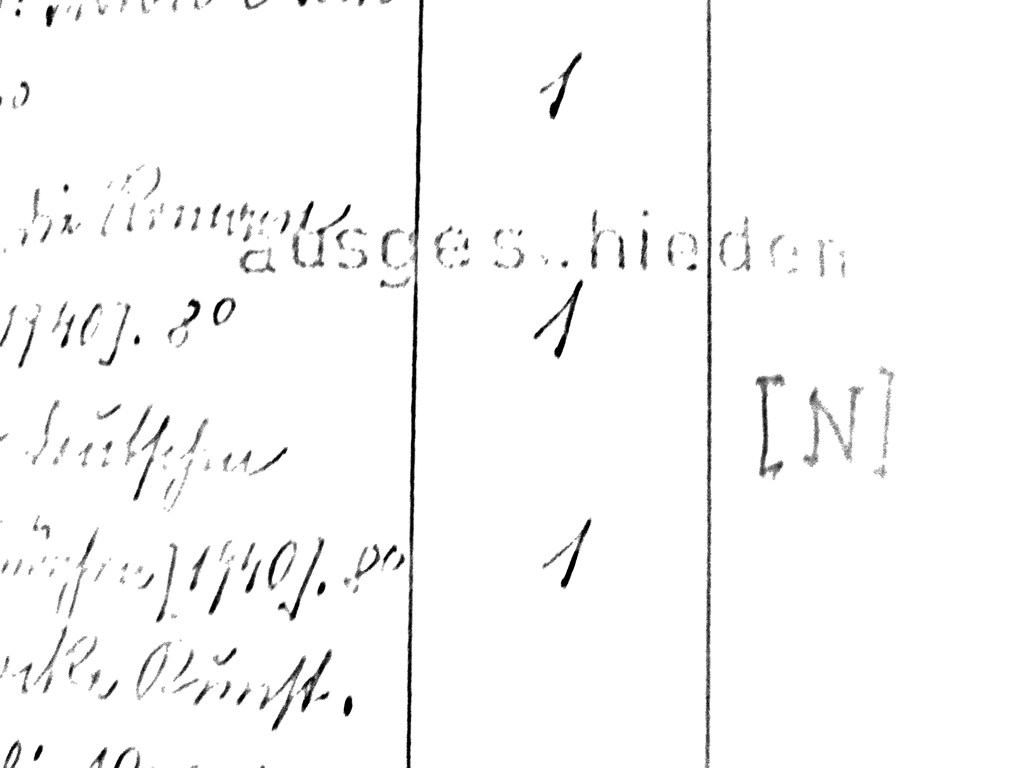
Buchinventar Bd. 3, 1947, Universitätsbibliothek der Akademie der bildenden Künste Wien.
Eröffnung: Do, 10.03.2016, 19.00 h
Begrüßung: Eva Blimlinger, Rektorin der Akademie der bildenden Künste Wien
Einführung: Elke Krasny und Barbara Mahlknecht, Institut für das künstlerische Lehramt, Fachbereich Kunst und Bildung
Am 9. Juli 1941 erging der Erlass des Reichsministeriums für Wissenschaft, Erziehung und Volksbildung in Berlin an die Akademie der bildenden Künste in Wien zur Einrichtung der „Meisterschule für Kunsterziehung und Ausbildung der Kunsterzieher an höheren Schulen“, das heutige Institut für das künstlerische Lehramt. 75 Jahre später ist dieser Gründungsmoment der Lehrer_innenausbildung für den Kunstunterricht weitgehend unaufgearbeitet. Dies bildet den Ausgangspunkt für das kuratorische Ausstellungs-, Recherche- und Vermittlungsprojekt Unheimliche Materialien. Gründungsmomente der Kunsterziehung.
Die für das Projekt von den Historikerinnen Ina Markova, Rosemarie Burgstaller und Sophie Bitter-Smirnov durchgeführte Rechechen haben ergeben, dass eine Institutionalisierung der Lehrer_innenausbildung für Kunsterziehung an der Akademie der bildenden Künste Wien nach dem Anschluss zunächst nicht vorgesehen war. 1938 betonten Reichserziehungsminister Bernhard Rust und die Mitglieder der Sitzung zur »Vereinheitlichung der Aufgaben der Kunstakademien in Grossdeutschland«, die im Reichsministerium für Wissenschaft, Erziehung und Volksbildung in Berlin am 5. Dezember 1938 stattfand, dass keine besondere Ausbildung für Kunsterziehung einzurichten sei. Die Begründung hierfür lautete, dass „das künstlerische Niveau der Anstalt wegen der Zeichenlehreranwärter nicht leide[n]“ solle. Am 28. Februar 1940 wurde jedoch, so geht es aus dem Universitätsarchiv der Akademie der bildenden Künste Wien hervor, in einer Sitzung des Professorenkollegiums die Vorbereitung der „Einrichtung eines Hochschulseminars für Kunsterziehung“ besprochen.
Mit der Gründung der „Meisterschule für Kunsterziehung und Ausbildung der Kunsterzieher an höheren Schulen“ 1941 unter dem Rektorat von Alexander Popp, illegaler Nationalsozialist seit 1935, wurde die Lehrer_innenausbildung an der Akademie unter der Leitung von August Ernst Mandelsloh, NSDAP-Mitglied seit 1932, auf den ideologischen Grundlagen des Nationalsozialismus aufgebaut. Philosophie und „Weltanschauung“ wurden als verpflichtende Prüfungsgegenstände eingeführt.
Das Studium an der Meisterschule für Kunsterziehung umfasste das „künstlerische Pflichtfach“ – „Malerei“, „graphische Künste“, „Zeichnen und Aquarellieren nach der Natur“ – und „wissenschaftliche Pflichtfächer“ – „allgemeine Geschichte“, „deutsche Literaturgeschichte“, „Methodik des Zeichenunterrichts“, „Kunstgeschichte und Kunstbetrachtung“. Im Seminar „Kunstbetrachtung“ fand die von der Bibliothek abonnierte Zeitschrift „Die Kunst im Dritten Reich“ – herausgegeben von Alfred Rosenberg im Parteiverlag der NSDAP für die „Überwachung der gesamten geistigen und weltanschaulichen Schulung und Erziehung der NSDAP“ – Verwendung. Otto Reich, illegaler Nationalsozialist seit 1933, war als Bibliotheksdirektor der Akademie tätig. Durch das in der Ausstellung gezeigte, handschriftlich geführte Inventarverzeichnis lässt sich nachvollziehen, welche Bücher und Zeitschriften mit dem Erscheinungsjahr 1941 sich in der Bibliothek befinden. Die nationalsozialistische Formierung der Kunsterzieher_innenausbildung wird deutlich durch die Schriften Materialien im Universitätsarchiv der Akademie, die den institutionellen Alltag dokumentieren: „Personenstandesblätter“, „Schülerlisten“, „Lehrpläne“, „Prüfungsordnungen“, „Professoren_innenkollegiumssitzungen“, „Haushaltspläne“, „Meisterschulpreise“ und „Werkstoffbeschaffungslisten“.
Das Projekt Unheimliche Materialien. Gründungsmomente der Kunsterziehung leistet Beiträge zur Aufarbeitung der Ideologiegeschichte von Bildungsregimen zur Untersuchung der Standortpolitik in Wien während der NS- Zeit, die auf die Gründung von Bildungseinrichtungen setzte und Kunst(raub)politik betrieb.
Gestützt auf Recherchen der Historikerinnen Ina Markova, Rosemarie Burgstaller und Sophie Bitter-Smirnov haben die beiden Kuratorinnen, Elke Krasny und Barbara Mahlknecht, ein offenes Archiv für die Ausstellung entwickelt. Die Installation, die gemeinsam mit dem Ausstellungsgrafiker Alexander Schuh konzipiert wurde, situiert Archivmaterialien im Kontext des Jahres 1941 und setzt diese in Dialog mit zeitgesnössischen künstlerischen Auseinandersetzungen.
Folgende Aktivist_innen und Künstler_innen, Anna Artaker, Ramesch Daha, Zsuzsi Flohr/Benjy Fox-Rosen/Eduard Freudmann/Eva Reinold/Luisa Ziaja, Lena Rosa Händle, Minna L. Henriksson, Hansel Sato, Sekretariat für Archivpolitiken, Geister und Lücken (Julia Wieger und Nina Höchtl) und Wer hat Angst vor dem Museum? (Imayna Caceres/Pêdra Costa/Verena Melgarejo Weinandt), viele von ihnen ehemalige Studierende oder heute an der Akademie der bildenden Künste Wien Lehrende, wurden eingeladen, themenbezogene Arbeiten zu zeigen oder Performances zu entwickeln. Diese künstlerischen Positionen artikulieren aktivistische Eingriffe in das Gedächtnis von Institutionen, nehmen Bezug auf Normierung und Disziplinierung von Körpern durch Erziehung und zeigen die frauenpolitische Verflechtung mit dem Nationalsozialismus. Einige der Arbeiten reflektieren aktuelle Veränderungen „multidirektionaler Erinnerung“ (Michael Rothberg) sowie die Bedeutung von „migrantisch situiertem Wissen“ (Ayse Gülec) für Geschichspolitiken.
Im Rahmen eines internationalen Symposiums werden am 20. und 21. April 2016 in Vorträgen und Gesprächen unter anderem die Zeithistoriker_innen Verena Pawlowsky und Dirk Rupnow, die Künstler_innen Zsuzsi Flohr/Benjy Fox-Rosen/Eduard Freudmann/Eva Reinold/Luisa Ziaja, die Kuratorin und Kunstvermittlerin Nora Sternfeld sowie die Psychoanalytikerin, Kulturkritikerin und Kuratorin Suely Rolnik Fragen des institutionellen Gedächtnisses, nationalsozialistischer Bildungspolitik, die Verbindung von Erinnerungspolitiken und künstlerischen Praxen sowie das Archiv und seine Materialien in kritischer historischer Forschung und Kunst erörtern. Am zweiten Tag des Symposiums finden Workshops mit der Arbeitsgruppe »Kunst, Pädagogik, Geschichte« (Gila Kolb, Barbara Mahlknecht, Anna Schürch, Bernadette Settele, Nora Sternfeld) statt, die sich einer kritischen Auseinandersetzung mit historischen Materialien und hegemonialen Traditionslinien der Kunsterziehung widmen.
Die Ausstellung wurde unterstützt durch den Zukunftsfonds der Republik Österreich. Das Symposium wird unterstützt durch MA 7 Kulturabteilung der Stadt Wien.
PROGRAMM: UNHEIMLICHE MATERIALIEN
Mi, 16.03.2016, 16.00 h, xhibit
A Look back into the Museum
Performance-Lecture mit Wer hat Angst vor dem Museum? (Imayna Caceres, Pêdra Costa und Verena Melgarejo Weinandt) (Englisch)
Di, 05.04.2016, 13.30 bis 17.30 h, xhibit
In heimgesuchten Archiven: (post)-nationalsozialistische Zeiten, dekoloniale Zukünfte
Sekretariat für Geister, Archivpolitiken und Lücken (Nina Höchtl und Julia Wieger)
Workshop (Englisch)
Mi, 20.04.2016, 09.30–21.00 h
Do, 21.04.2016, 10.00–16.00 h
Atelierhaus der Akademie, Mehrzwecksaal
Vom Archiv ausgehend. Institutionelle Geschichte(n), Regime der Bildung, Künstlerische Praxen und Erinnerungspolitiken
Symposium: Vorträge, Diskussionen und Workshops mit Beiträgen von Tal Adler/Friedemann Derschmidt/Elisabeth Samsonow/Karin Schneider/Anna Szöke/Niko Wahl, Eva Blimlinger, Zsuzsi Flohr/Benjy Fox-Rosen/Eduard Freudmann/Eva Reinold/Luisa Ziaja, Minna L. Henriksson, Gila Kolb, Elke Krasny, Martin Krenn, Barbara Mahlknecht, Verena Pawlowsky, Sabine Plakolm, Birgit Peter, Dirk Rupnow, Anna Schürch, Bernadette Settele, Nora Sternfeld, Suely Rolnik.
Di, 03.05.2016, 15.00 bis 17.30 h, xhibit
Die Lehrveranstaltung Kunst, Öffentlichkeit und Geschichtspolitik besucht die Ausstellung
Belinda Kazeem-Kaminiski (Deutsch)
Di, 10.05.2016, 17.00 h, Treffpunkt: xhibit
1941: Ein geschichtspolitischer Walk in Wien
Mit Studierenden der von Elke Krasny geleiteten Lehrveranstaltung Kunst und Öffentlichkeit (Deutsch)
Mi, 11.05.2016, 11.00 h, xhibit
The Missing Monument of the Expelled Jews and Others (working title)
Workshop im Kontext der Lehrveranstaltung Arts-based Research and Commemoration in
Progress von Zsusi Flohr (Englisch)
Fr, 13.05.2016, 16.00 h, xhibit
Kuratorinnenführung (Deutsch/Englisch)
